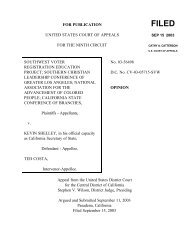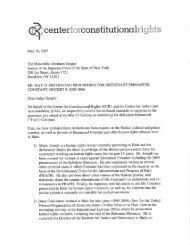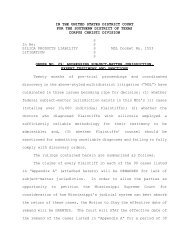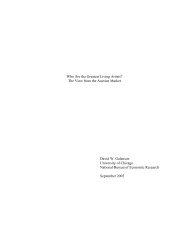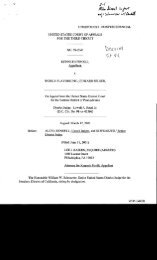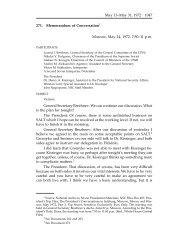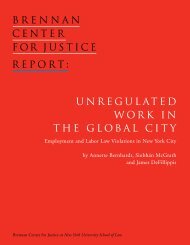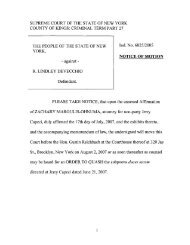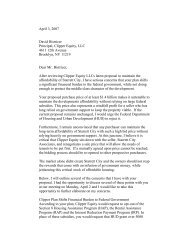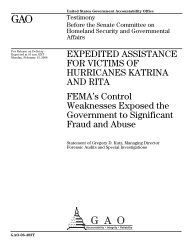Strengthening Schools by Strengthening Families
Strengthening Schools by Strengthening Families
Strengthening Schools by Strengthening Families
Create successful ePaper yourself
Turn your PDF publications into a flip-book with our unique Google optimized e-Paper software.
14<br />
CHRONIC ABSENCE STARTS YOUNG AND GROWS WITH AGE<br />
Citywide, more than 20 percent of elementary school pupils missed more than a month of school in 2007–08;<br />
nearly 40 percent of high school students missed that much. Moreover, the rates of severe chronic absence<br />
increase with the grade level. While 4.5 percent of elementary pupils missed 38 days (nearly two months),<br />
24 percent of high school students missed that much.<br />
CHRONIC AND SEVERE CHRONIC ABSENTEEISM:<br />
NEW YORK CITY CITYWIDE TOTALS School Year 2007–08<br />
Students with<br />
0 to 9 absences<br />
Number Percent<br />
Center researchers interviewed leaders in six of the 13 elementary schools serving one zip code in<br />
and around Morrisania (the neighborhood’s two charter schools were excluded). In each case, the<br />
schools served almost entirely low-income families, but the percentage of kids with more than 20<br />
absences a year varied widely from a high of 42 percent at P.S. 2 to a low of 19 percent at P.S. 88.<br />
(See chart on page 12.) While the schools had a similar mix of issues, leaders tended to identify<br />
one or two items driving their attendance problems—and these items tended to be different, as<br />
were their approaches on how to manage them. Some issues required medical or social service<br />
intervention: asthma, eviction, maternal depression, hunger, shifting shelter accommodations<br />
and foster care placement. Others were bureaucratic problems, like issues with transportation for<br />
special education pupils. Just as frequent, though, were cultural challenges like families that take<br />
their children out of school for weeks at a time to visit relatives outside the country, or others that<br />
routinely extend their weekends. “Mondays and Fridays were really bad days,” recalls Janet-Ann<br />
Sanderson-Brown, principal of P.S. 146, where 36 percent of the pupils were chronically absent<br />
in 2007–08.<br />
“Being able to diagnose the cause of this is important. There are all sorts of different interventions,”<br />
says Balfanz at Johns Hopkins. “Somebody has to talk to the kid and see if it’s an easy or a hard fix. If<br />
it’s a hard fix, you’ve got to have somebody who can spend more time on it.”<br />
makIng sChools welComIng<br />
Students with<br />
10 to 19 absences<br />
Number Percent<br />
CHRONIC ABSENCE 2<br />
Students with<br />
20 to 37 absences<br />
Number Percent<br />
TOTAL NUMBER<br />
OF STUDENTS 1<br />
GRADE<br />
K to 5th 446,232 232,048 52.0 124,056 27.8 69,841 15.7<br />
6th to 8th 227,121 113,003 49.8 60,329 26.6 36,813 16.2<br />
9th to 12th 351,072 145,064 41.3 66,134 18.8 55,620 15.8<br />
ALL GRADE<br />
CITYWIDE TOTALS<br />
1,024,425 490,115 47.8 250,519 24.5 162,274 15.8<br />
SOURCE: New York City Department of Education, requested data run from ATS, July 2008<br />
NOTES: Attendance numbers and totals were generated after the close of the 2007–08 school year. Data was obtained using each student’s universal identifier number,<br />
assuring that their absences would be tracked properly if they changed schools within the school year. Students often leave the school system without notifying the school, thus<br />
building up absences. However, school officials are required to correct the absence numbers once they have ascertained that the student is no longer attending New York City<br />
public schools.<br />
Some principals, working with community based organizations, have helped to make their schools<br />
attractive and safe for parents and caregivers, too—especially important in neighborhoods with high<br />
rates of homelessness, single-parent families, grandparents raising children, high unemployment rates<br />
and other difficulties that affect life at home.<br />
When Principal Paul Cannon arrived at P.S. 140 in Morrisania in 2003, it was on the state’s list of<br />
schools facing possible closure and its attendance rate was a dismal 85 percent. Today, test scores are<br />
soaring and the school is moving off the state’s list. Schoolwide attendance was at 90 percent <strong>by</strong> the<br />
end of the last school year.



